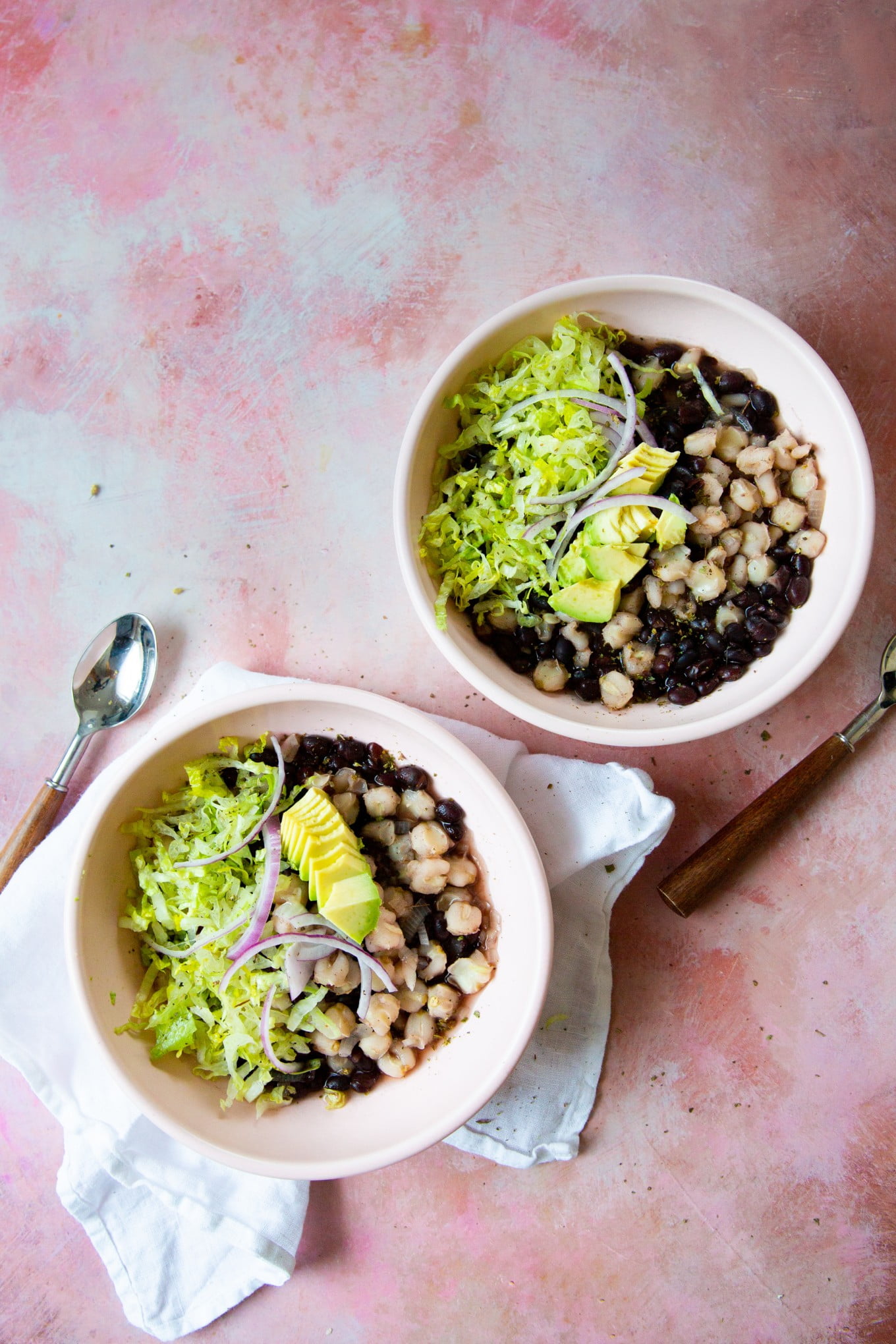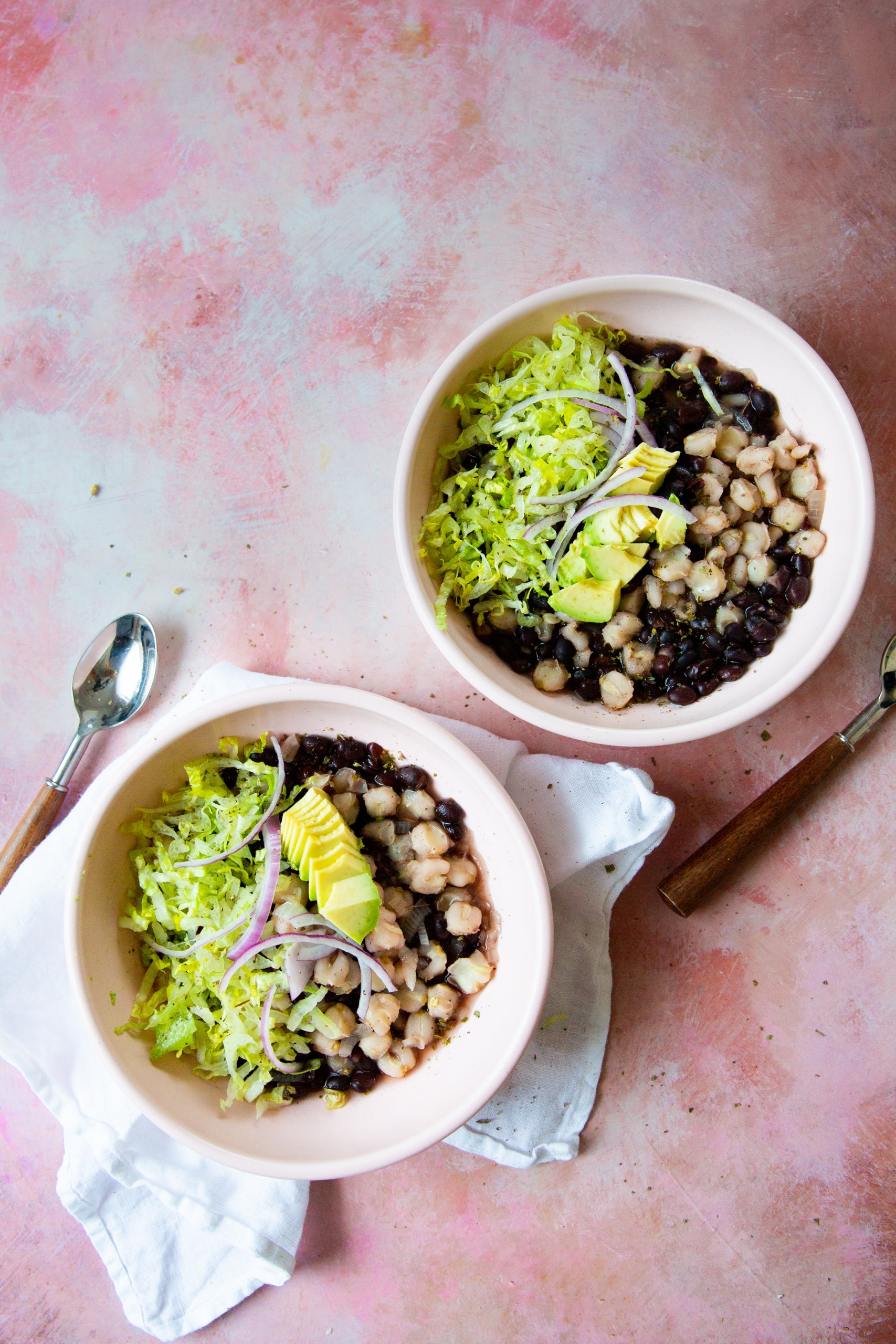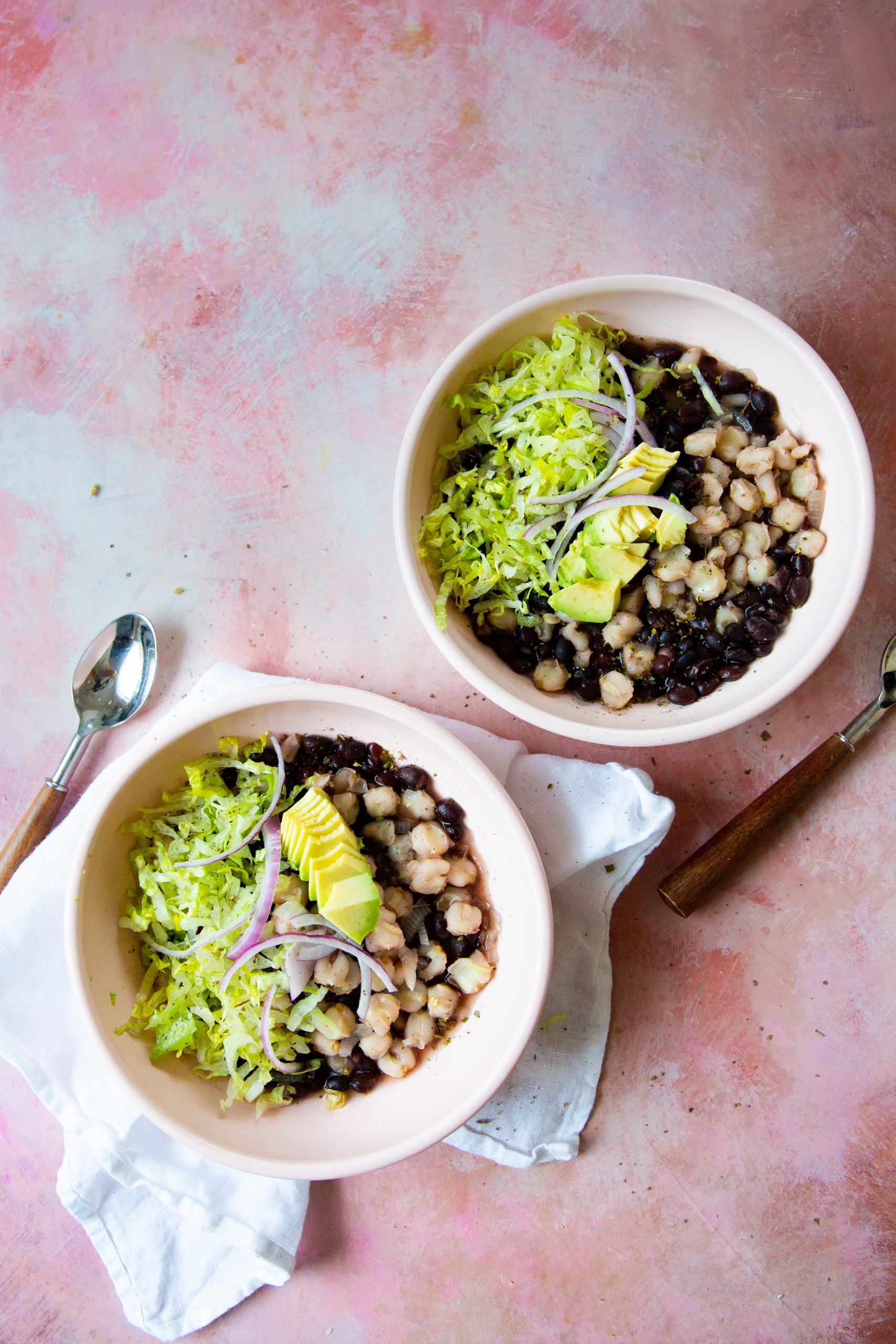
This recipe for pozole black bean soup is one of the most traditional Mexican soups ever. It is also one of the easiest soups you’ll ever make. It truly feels like having a magical Mexican recipe that will nourish your heart and soul with every spoonful.
Why will you love this recipe?
When it’s cold outside, nothing beats a warm bowl of pozole soup. During winter, I crave hearty, flavorful soups that are simple to make.
I have fond memories of my grandmother, who used to prepare this recipe. Whenever I make it, the aroma of her kitchen fills my house. It’s incredible how food has the power to trigger memories of people and places. Do you experience the same when cooking?
What is pozole or posole?
Pozole, pronounced [po’sole] in Spanish, originates from the Nahuatl language and is derived from the word “pozoll” which means “cacahuazintle”. Cacahuazintle is a type of white heirloom corn that is used to make both masa and pozole.
In Mexico, pozole refers to both the soup and the corn, whereas in English, particularly in the USA, we refer to this type of corn as hominy and use “pozole” or “posole” to refer to the soup or stew made from it.
The Origins of Black Bean Pozole: A Brief History
Black bean pozole is a traditional Mexican dish that has a rich history dating back centuries. This hearty soup is a staple in Mexican cuisine, known for its bold flavors and comforting qualities. But where did black bean pozole originate? Let’s delve into its fascinating history.
Pozole itself has ancient roots, predating the arrival of the Spanish in Mexico. It was a dish enjoyed by the Aztecs, who considered it a sacred food. The name “pozole” actually comes from the Nahuatl word “pozolli,” which means “hominy.”
Originally, pozole was made with white hominy and typically included pork as the main protein. However, as time went on and culinary traditions evolved, variations of pozole emerged. One of these variations is black bean pozole.
Black bean pozole is believed to have originated in the southern regions of Mexico, particularly in the state of Oaxaca. Oaxaca is known for its diverse and vibrant cuisine, with a focus on indigenous ingredients and techniques. The addition of black beans to pozole adds depth and richness to the dish, making it even more satisfying.
How does black bean pozole taste?
The combination of black beans and hominy creates a unique texture and flavor profile in black bean pozole. The beans add creaminess and earthiness, while the hominy provides a satisfying chewiness.
Black bean pozole continues to be enjoyed by people all over the world who appreciate the rich flavors and cultural significance of this traditional Mexican dish. It is often served during celebrations and special occasions, bringing people together to enjoy a warm and comforting meal.
The Key Ingredients: Let’s Talk About Black Beans
Black beans are a versatile and nutritious legume that can enhance any meal. Whether you’re a vegetarian, a meat lover, or just looking to incorporate more plant-based protein into your diet, black beans are a fantastic option. In this article, we will explore the key ingredients of black beans and discuss their culinary uses.
First and foremost, black beans are packed with essential nutrients. They are an excellent source of fiber, protein, and folate. Additionally, they contain a variety of minerals, such as iron, magnesium, and potassium. Including black beans in your diet can help support digestion, regulate blood sugar levels, and promote heart health.
In terms of their culinary uses, black beans can be used in a wide range of dishes. One popular recipe that features black beans is black bean pozole, a traditional Mexican soup. This hearty dish combines black beans with hominy, a type of corn, and various spices to create a flavorful and satisfying meal.
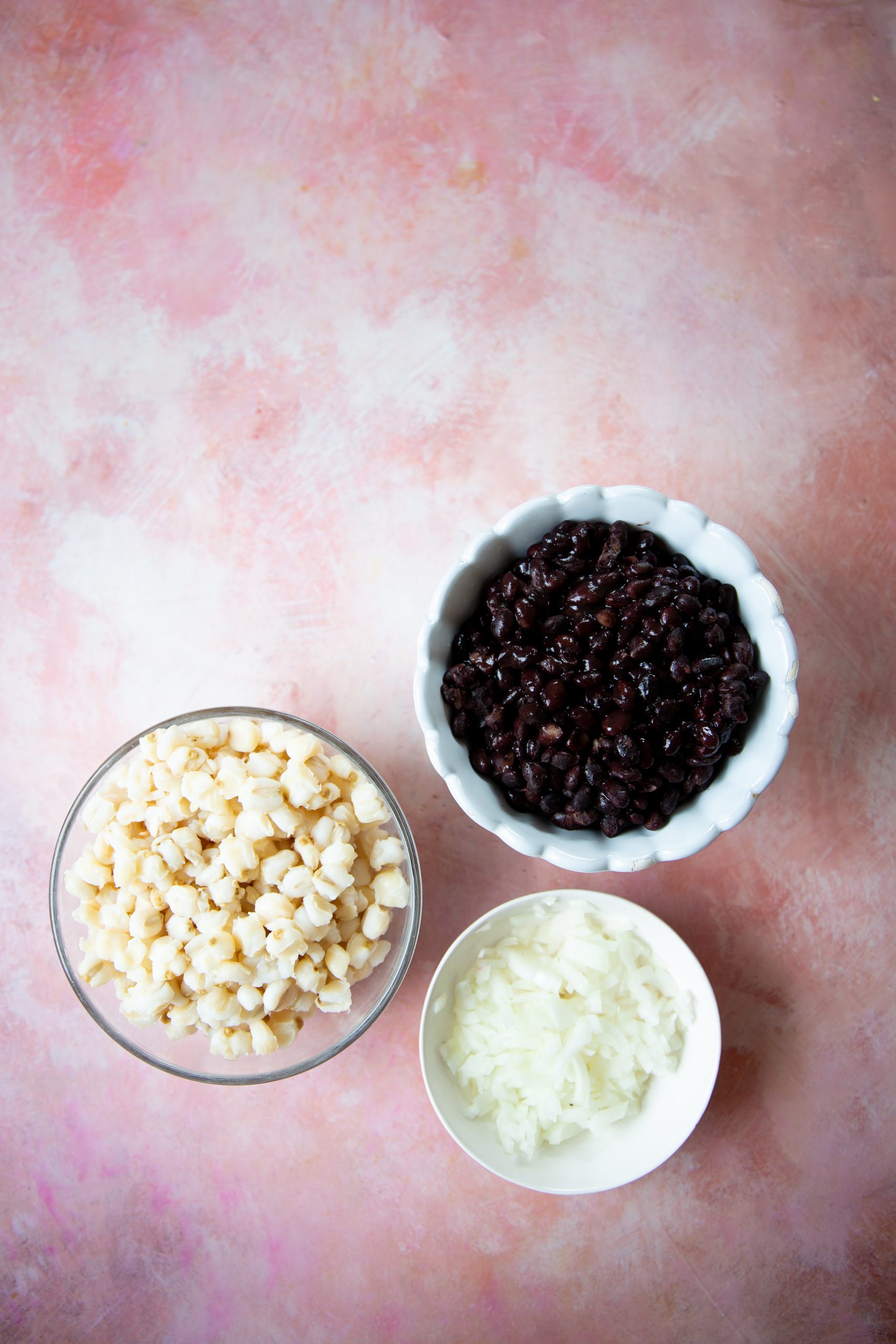
Ingredients for the pozole and black bean soup
- Hominy, pozole or posole. You can use fresh and cook it at home or use canned hominy. I use canned, and it never disappoints.
- Black beans, same here; use canned or black beans cooked at home. But is is important for the beans to be cooked thoroughly and be soft.
- Onion, yellow onion, or white onion work fine here.
- Vegetable oil: choose a vegetable oil with a neutral-tasting flavor. I cook with canola, avocado, or safflower oil.
- For serving, Shredded lettuce or, in a pinch, you could also use shredded cabbage. Avocado. Oregano: Mexican dried oregano would be ideal here. Red onion, thinly sliced red onion. Thinly sliced radishes
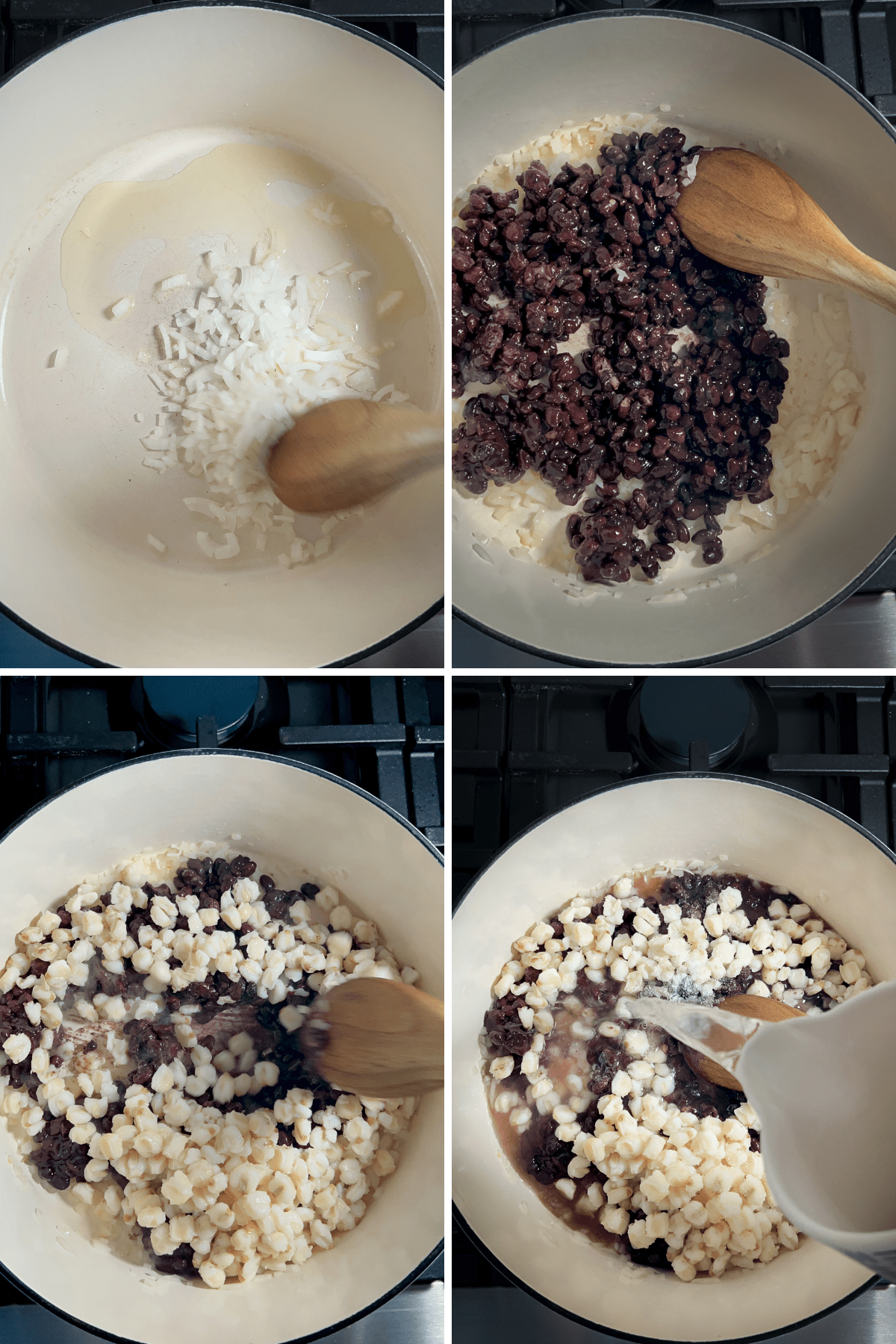
How to make black bean pozole?
- In a Dutch oven, add the oil and saute the onion until translucent with a big pinch of salt.
- Add the beans, homecooked or canned, and smash them a bit with the back of a wooden spoon. Add the liquid of choice, the hominy, stir, and let it simmer for 10 minutes. Check for seasoning and adjust if needed.
- Serve with diced avocado, Mexican oregano, thinly sliced radishes, shredded lettuce, and minced onion. Have warm corn tortillas or corn tortilla chips on the side.
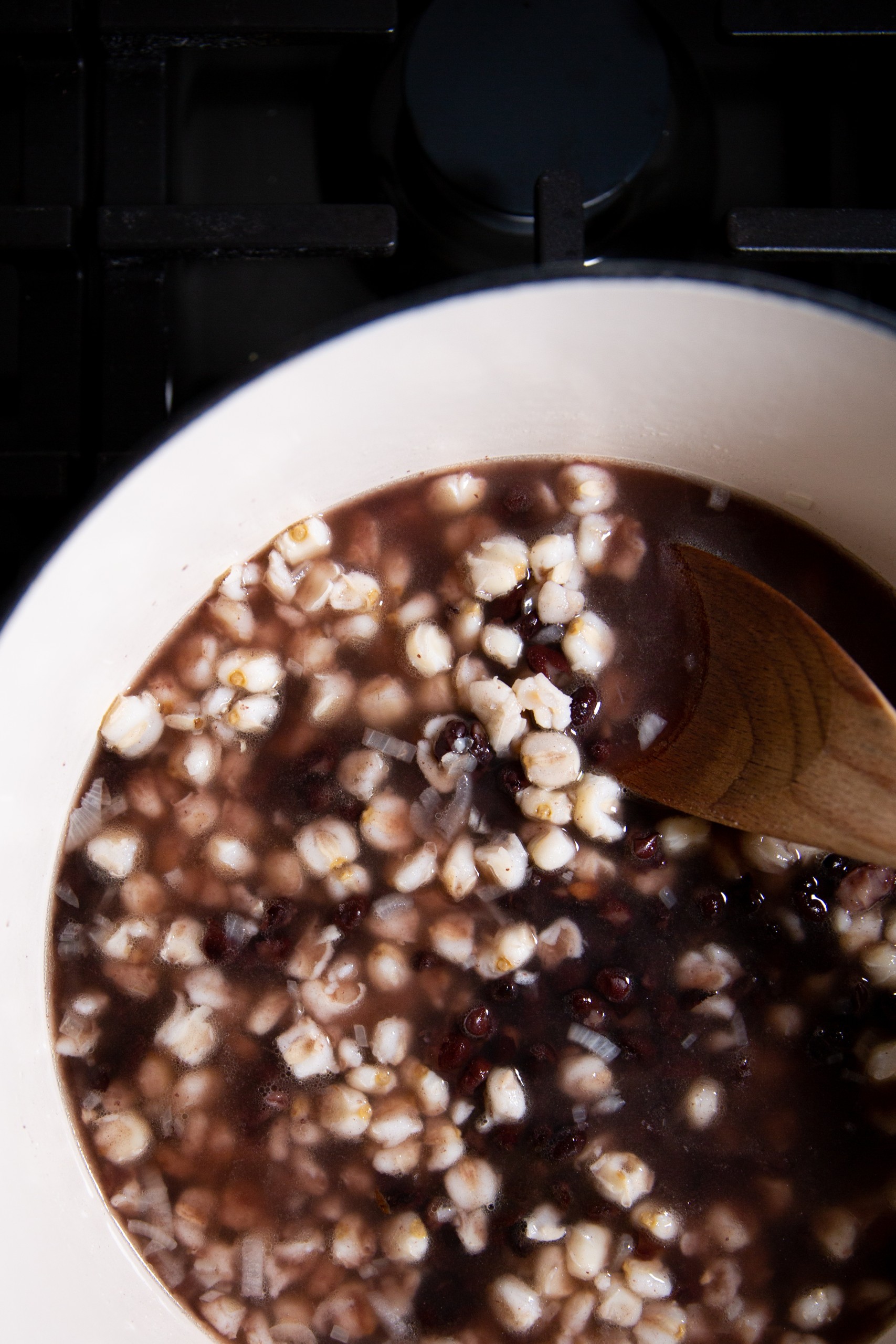
Pozole recipes
There are many different pozole (posole) recipes in Mexico; one of the most popular recipes is the pozole rojo from the state of Jalisco, which is made with a red broth made with a chile sauce made with dried chiles ( ancho, pasilla, and guajillo chiles).
In Mexico City, we eat pozole Rojo and pozole Verde (green posole with broth made with tomatillos). Throughout the country, there are many other pozole recipes and also multiple ways of serving them. There are states where they finish it with fresh cilantro, fresh lime juice, chicharrón, and jalapeños, and there where they add chicken, pork, or beef.
Black Bean Pozole
Equipment
- Dutch oven or large soup pot
Ingredients
- 3 cups black beans, cooked or 2-14 oz cans of cooked black beans
- 3 cups hominy, cooked 1-25 oz can
- 1 tablespoon vegetable oil
- 1/2 onion, chopped
- 4 cups vegetable broth or water
- salt to taste
For serving
- dry oregano
- sliced radishes
- avocado
- diced onion
- shredded lettuce
Instructions
- Cover the beans with water and soak overnight.
- The next day, discard the water and cook the beans in 6 cups of fresh water. Cook for an hour or until the beans are soft. Add salt to taste.
- In a separate soup pot or dutch oven add the oil and saute until translucent.
- Add the three cups of beans, homecooked or canned, and smashed them a bit with the back of a spoon. Add the liquid of choice, the hominy and let it simmer for 10 minutes.Check for seasoning and adjust if needed.
- Serve with diced avocado, Mexican oregano, thinly sliced radishes and minced onion.
Notes
Nutrition
information
Nutritional information of this recipe is only an estimate, the accuracy for any recipe on this site is not guaranteed.
- Peach Scones: A Delicious and Easy Recipe - July 24, 2024
- Panzanella inspired Pan Fried Gnocchi Salad - July 22, 2024
- Chickpea Vegan Ceviche - July 19, 2024
